Do you want to grow your brand with a little help from some influential figures? Have you considered influencer marketing but can’t seem to find the right partner(s)?
In this article, you’ll discover why micro-influencers can be such valuable assets to your brand and understand how to effectively partner with them.
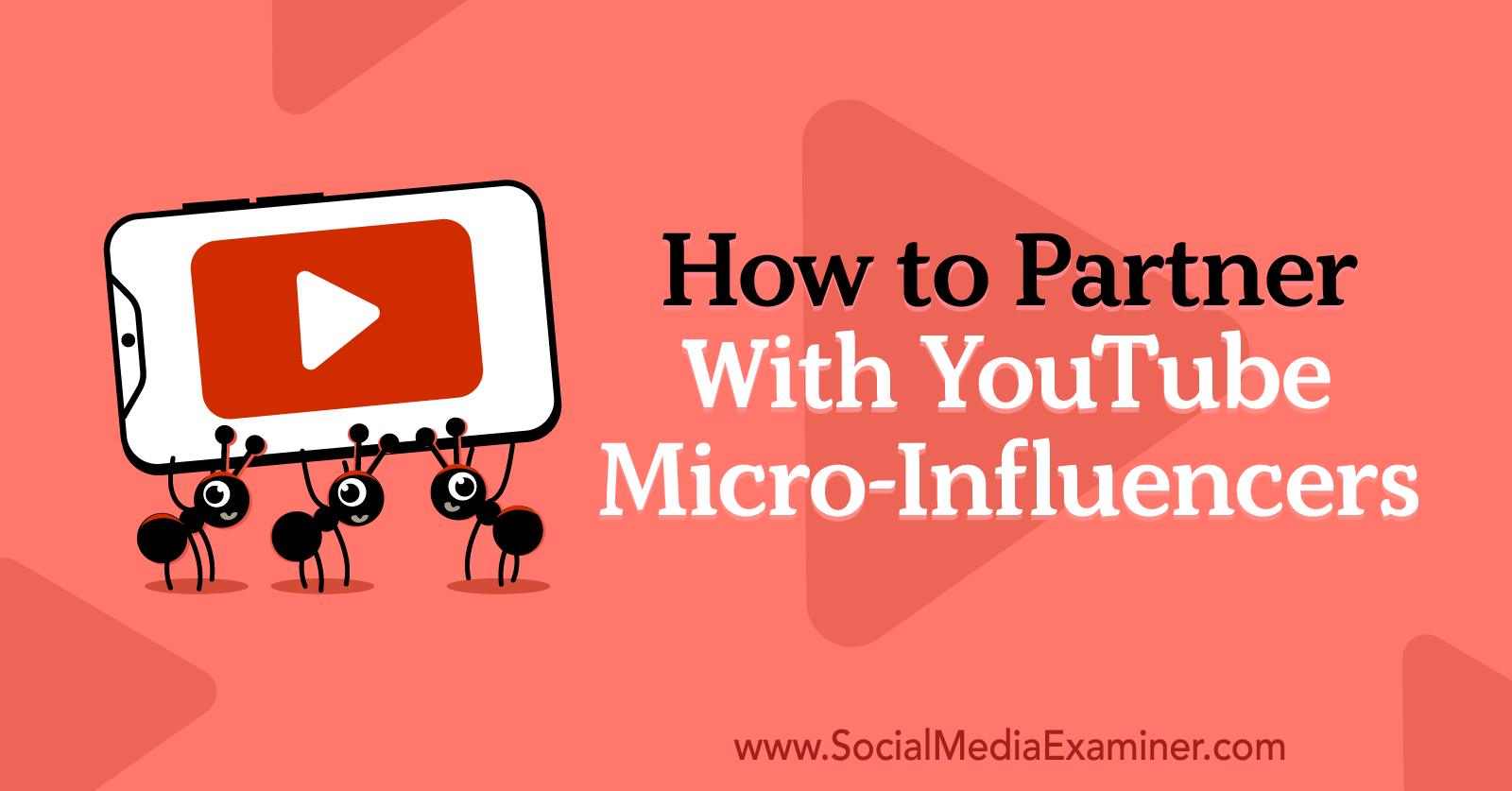
Why YouTube Micro-Influencers Matter
Working with micro-influencers on YouTube offers unique opportunities and benefits you won't get from partnering with celebrities or macro-influencers.
What Is a Micro-Influencer?
Social media influencers are people who have developed online followings due to their experience with or knowledge of a specific topic. They typically have engaged audiences and a knack for creating content with an authentic feel.
Although some influencers are celebrities or high-profile professionals, many are regular people who've built their audiences organically. Micro-influencers typically fall into the latter group. Here's a snapshot of standard influencer categories:
- Mega-influencers: Usually have massive audiences of 1 million or more followers and may double as celebrities
- Macro-influencers: Have between 100,000 and 1 million followers and are often referred to simply as influencers
- Micro-influencers: Generally have between 1,000 and 100,000 followers and tend to have high engagement and specialized knowledge
- Nano-influencers: Often have fewer than 1,000 followers and may focus on a smaller or more exclusive niche
Micro-influencers typically carve out a niche by specializing in one area or an intersection of popular interests. For example, YouTube micro-influencer Alex Michael May is known for her expertise in beauty, fashion, travel, and wellness. As you search for brand partners, you'll want to find influencers who have expertise in your vertical.

How Micro-Influencers Can Help Your Business
Influencer marketing can help your business achieve results at a speed and scale that other methods can't match. After all, buying ads and publishing branded content can only get your business so far. Here are some of the benefits of working with YouTube micro-influencers.
Build Trust
No matter who your target customers are, it's a given that they crave genuine content and would lose interest in a brand if it felt fake.
Micro-influencers excel at creating content that authentically positions your brand. By partnering with these creators, your brand can appear more credible, which has the added benefit of helping you gain customer trust.
Improve Exposure
Genuine influencer content can easily outrank branded YouTube videos. In the beauty industry, for instance, a high percentage of the top YouTube videos come from influencers rather than brands.
For example, micro-influencer Jenny Ernst's YouTube channel has nearly 50,000 subscribers, and her sponsored video for Away luggage has more than 16,000 views. Her follower count and video views are exponentially higher than the official Away channel's metrics—making her a smart choice for a brand partner.

Get World-Class Marketing Training — All Year Long!
Are you facing doubt, uncertainty, or overwhelm? The Social Media Marketing Society can help.
Each month, you’ll receive training from trusted marketing experts, covering everything from AI to organic social marketing. When you join, you’ll also get immediate access to:
- A library of 100+ marketing trainings
- A community of like-minded marketers
- Monthly online community meetups
- Relevant news and trends updates
If your company's content isn't getting the traction you'd hoped for, partnering with a micro-influencer could help you put your brand in the spotlight. With great micro-influencer content, you can get the exposure you want while attracting new customers.
Here's how to get started.
#1: Find YouTube Micro-Influencers to Partner With
If you don't have any YouTube micro-influencers in mind for potential partnerships, there are a few ways to find the right ones for your business. You can use any one of a number of paid tools to find micro-influencers or you can use YouTube to find micro-influencers—no additional investment required.
Start by typing your niche and the word influencers into the search bar—for example, beauty influencers. Then take a moment to review the auto-complete suggestions. If your niche has a lot of micro-influencers, you may be able to narrow down your search to get more granular results—such as beauty influencers over 40.
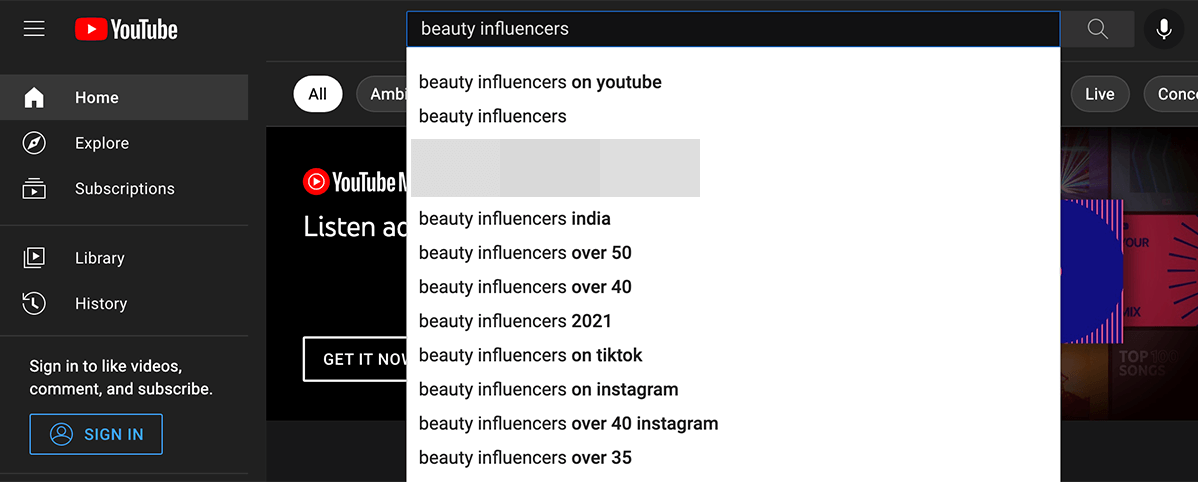
Alternatively, you can check YouTube's Explore tab and click Trending to view content from popular creators. YouTube often highlights creators on the rise in the Explore tab, making it even easier to spot potential partners.

When you find content that looks like a good fit for your business, take time to do some manual research. For instance, you'll want to check the creator's follower count, the age of their channel, and their focus areas. You'll also want to watch a few of their videos to get a better sense of their work and how they partner with brands.
Before cold-emailing potential partners, engage with their accounts. You can get on their radar by supporting their channels and leaving (non-promotional) comments on their content. When you're ready to propose a partnership, check the About tab on any creator's YouTube channel page. Most micro-influencers provide contact details for business inquiries so you can get in touch easily.
Now you know where to find potential brand partners on YouTube. But how do you actually partner with micro-influencers and build relationships that benefit both of you? Use the guide below to create a reliable influencer marketing workflow.
#2: Set Goals for Your YouTube Influencer Marketing Campaign
Like any marketing initiative, YouTube micro-influencer partnerships are more effective when they start with well-defined objectives. Most influencer marketing campaigns focus on one of the primary goals below.
Increase Brand Awareness
Whether they have just over 1,000 or just under 100,000 YouTube followers, micro-influencers can introduce your brand to a lot of new customers. In fact, influencer marketing is ideal for driving discovery and keeping your products top-of-mind with your customer base. Depending on the metrics that matter to your team, you might measure brand mentions, YouTube channel views, or search volume when pursuing this goal.
For example, micro-influencer Lydia Murphy's video below introduces viewers to a range of beauty brands. Her narration includes useful explanations of product benefits, which is a great way to drive discovery and pique viewers' interest.
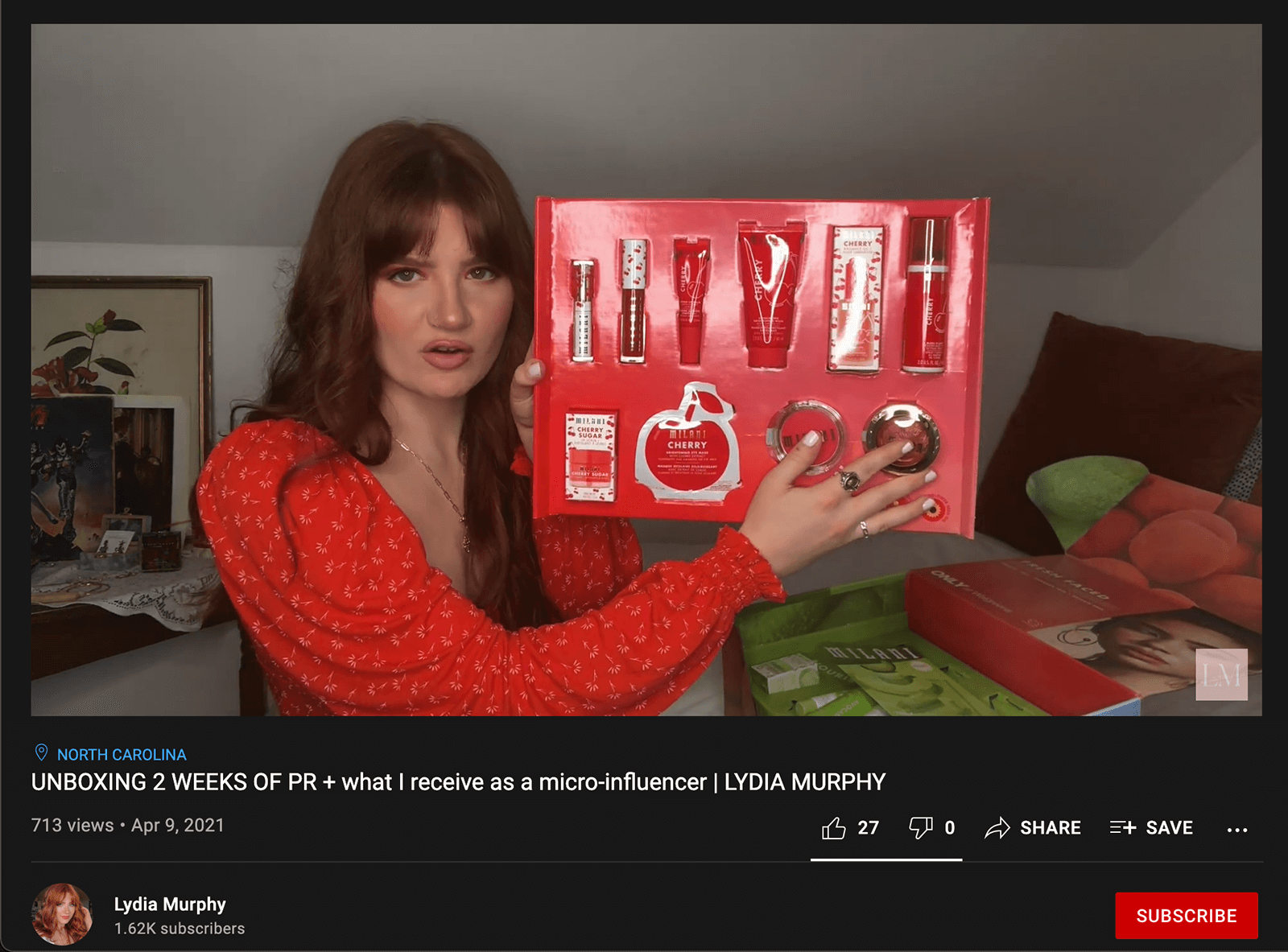
Grow Your Audience
If you want more social media followers, micro-influencers can help your brand grow its audience on almost any channel. Partnering with a YouTube micro-influencer to promote a giveaway or contest can be a great way to gain more followers quickly. To see if your efforts are working, compare your audience growth to your account benchmarks post-campaign.

Discover Proven Marketing Strategies and Tips
Want to go even deeper with your marketing? Check out the Social Media Marketing Podcast! Publishing weekly since 2012, the Social Media Marketing Podcast helps you navigate the constantly changing marketing jungle, with expert interviews from marketing pros.
But don’t let the name fool you. This show is about a lot more than just social media marketing. With over 600 episodes and millions of downloads each year, this show has been a trusted source for marketers for well over a decade.
Drive Traffic and Sales
Micro-influencers can do more than help you get more social media followers or brand mentions. Many can also increase your website traffic and generate revenue. To attribute traffic or sales to the right creator, provide each YouTube micro-influencer a unique link or discount code that you can easily track.
#3: Choose Content Types for Your YouTube Influencer Campaign
Once you've set campaign goals, it's easier to align the YouTube micro-influencer content you want with the objectives you need to achieve. Take your pick from some of the most popular types of influencer content.
Unboxing Videos
Do you want to show off your brand's packaging or highlight the number of products in every order? Consider asking for an unboxing video, which shows a micro-influencer opening your products. This type of content can be great for generating excitement for your brand or anticipation for your new products.
In Lydia Murphy's YouTube video above, she unboxes several beauty products. The video conveys her genuine excitement for the package contents, and the captions include a complete list of brands and product names so viewers can start shopping instantly.
Product Reviews
If you want to appeal to viewers who are a bit further along in their customer journey, consider requesting a product review instead. These videos show micro-influencers testing or trying on products and tend to include much more in-depth explanations of features and benefits.
For example, YouTube micro-influencer Alex Michael May's video below shows her trying on multiple Fabletics products while commenting on their fit and appearance. Her text overlays include product names and her video captions include product links so viewers can purchase seamlessly.

Sponsored Spots
Most product review and tutorial videos focus completely on a single brand. If you're looking for a subtler brand mention or a more affordable way to partner with micro-influencers, sponsored spots can be ideal.
Essentially, sponsored spots are brief brand or product mentions incorporated into much longer lifestyle videos. Experienced YouTube micro-influencers know how to make these spots seem natural, positioning sponsors in a way that feels authentic. Because sponsored spots are much shorter than other types of influencer content, they can be more affordable as well.
Tutorials and Explainers
If you're looking for a more natural way for micro-influencers to mention your brand, consider requesting a tutorial. In these videos, the creator reveals how to solve a problem or accomplish a task using your brand as the solution.
For example, YouTube micro-influencer TomKat Stitchery's video below shows how the creator used Skillshare to inspire creativity—a natural fit with her channel's focus on sewing. Her video explains how to use the sponsor's platform and details her experience with a class before encouraging viewers to test it for themselves with a free trial.
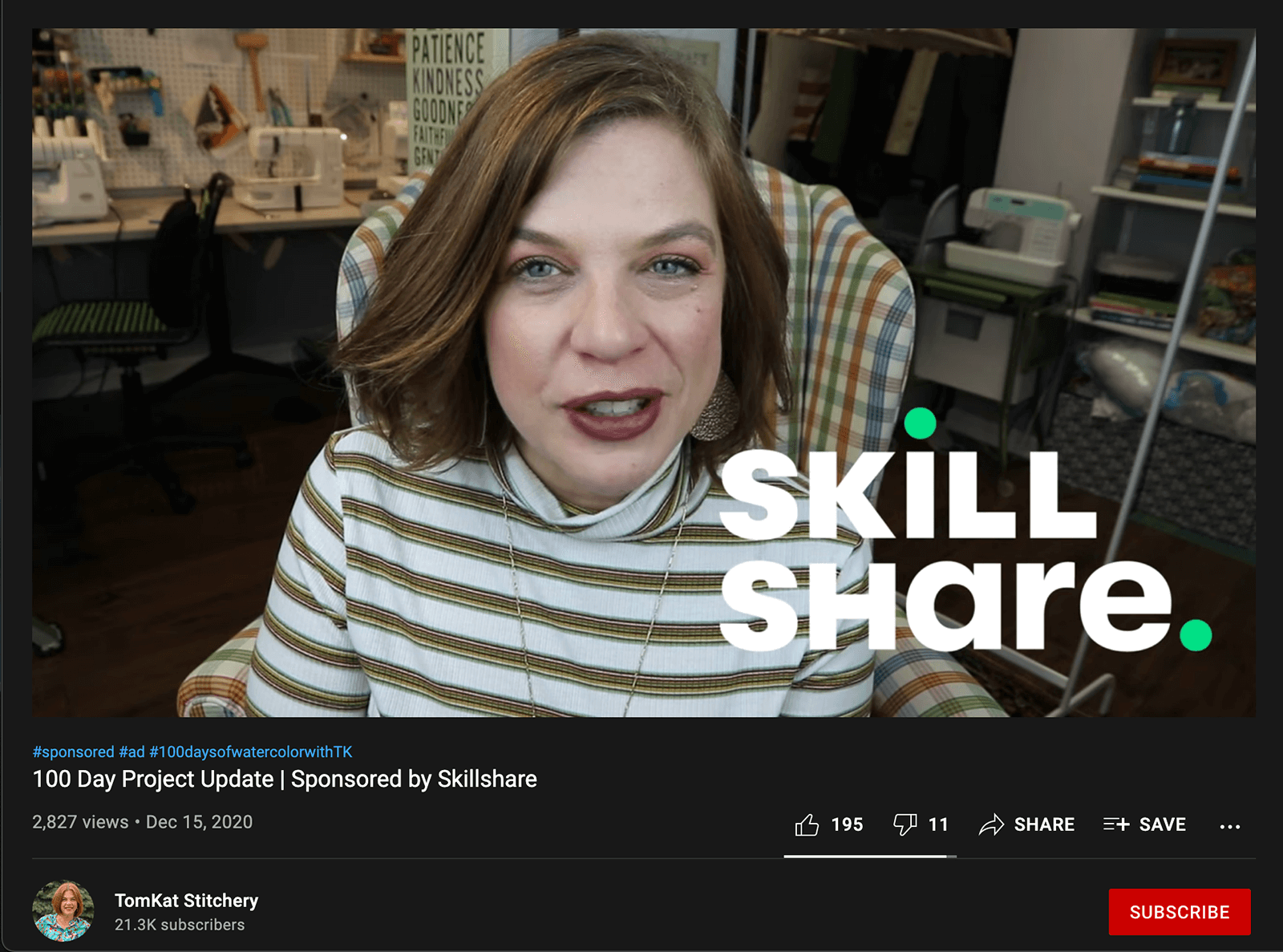
#4: Decide on a Budget
How much can you afford to spend on your YouTube micro-influencer campaign? When planning your first-ever partnership, you might be unsure how much to budget.
If you've invested in one of the influencer marketing tools above, make a note of the fees for the influencers on your shortlist. Then add up the costs to determine how much to budget for your campaign.
Alternatively, use industry statistics to guide your planning. For example, BigCommerce reports that brands most often spend $1,000 to $10,000 for influencer marketing each year.
Keep in mind that you may need to provide micro-influencers with complimentary products or services so they can test what your brand offers. You may also have to budget for the discounts and free products that you offer their followers.
Below, YouTube micro-influencer Jenny Ernst's video includes a sponsored spot for Away luggage and a discount to incentivize viewers. If you used a similar partnership model, you'd need to factor in the cost of the sponsored spot, the complimentary product, and the discount code.
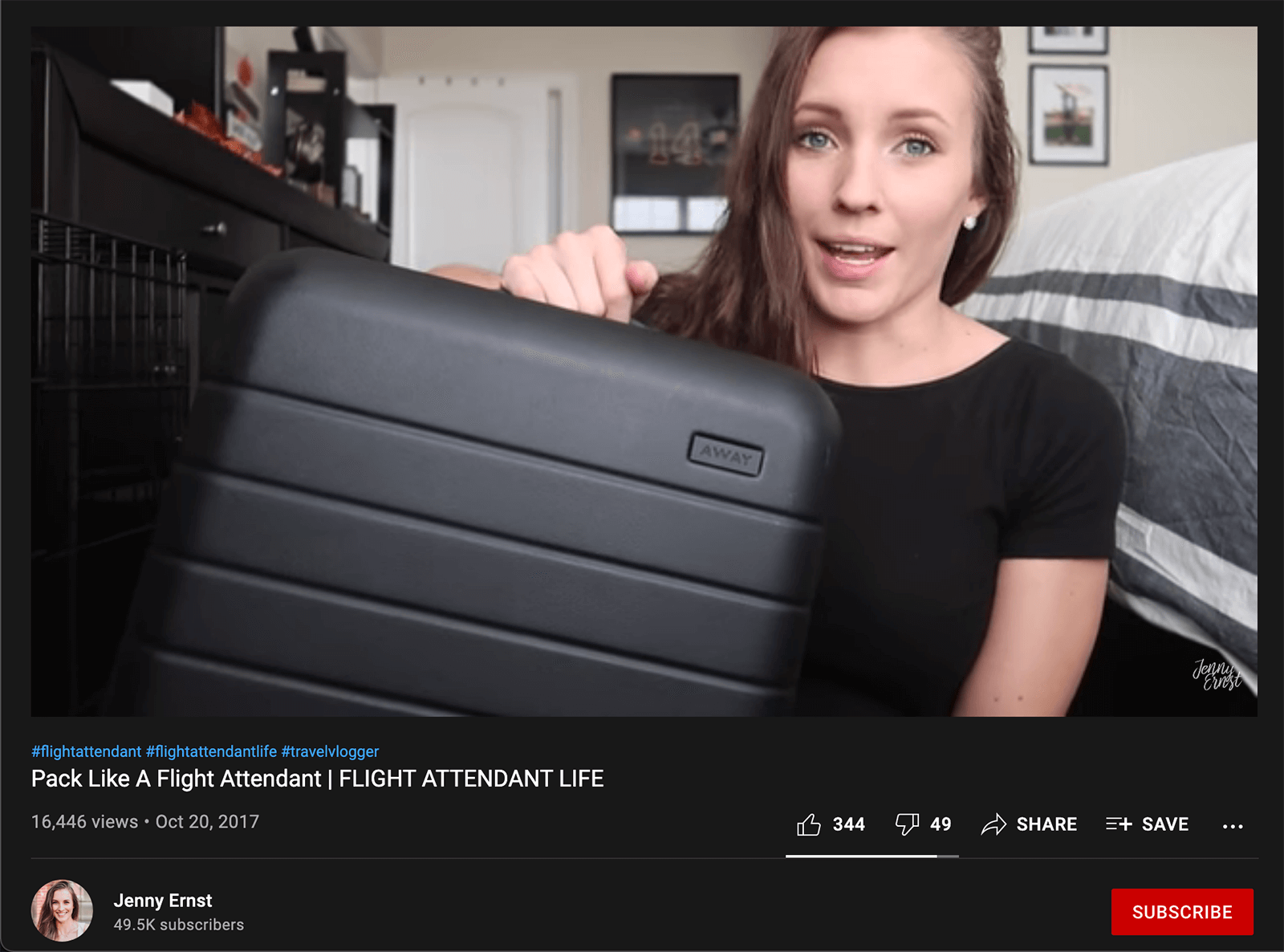
#5: Make a Pitch
Once you've decided on the logistics of your YouTube influencer campaign, make a pitch to the micro-influencers on your shortlist. A solid pitch usually includes these elements:
- An introduction to your brand and products, including relevant information like your location or your mission.
- An explanation of why you'd like to pursue a partnership, such as shared audiences or values.
- An outline of the campaign you want to run, including your goals, the content you'd like to sponsor, your brand guidelines, your timeline, and your budget.
In many cases, micro-influencers have complete creative control over the content they post. In others, they may be willing to let you review sponsored content prior to publishing. Be sure to discuss this aspect during the negotiation process.
If the creator accepts your pitch, you'll need to complete tasks like signing an agreement and providing complimentary products. You can manage many of these logistics within most influencer marketing platforms.
#6: Track Your YouTube Influencer Campaign Results
Once the campaign begins, start tracking results. The metrics you should track depend on your campaign goals and the type of content you sponsored. Some common influencer marketing metrics include:
- Social media followers
- Brand mentions or campaign hashtags
- Website traffic or page views
- Online purchases or free trials
For example, this Stories For Coffee video shows how to create holiday gifts with Redbubble. The creator includes a unique link and a promotional code in the caption, making it easy for the sponsor to track traffic and sales from the partnership.
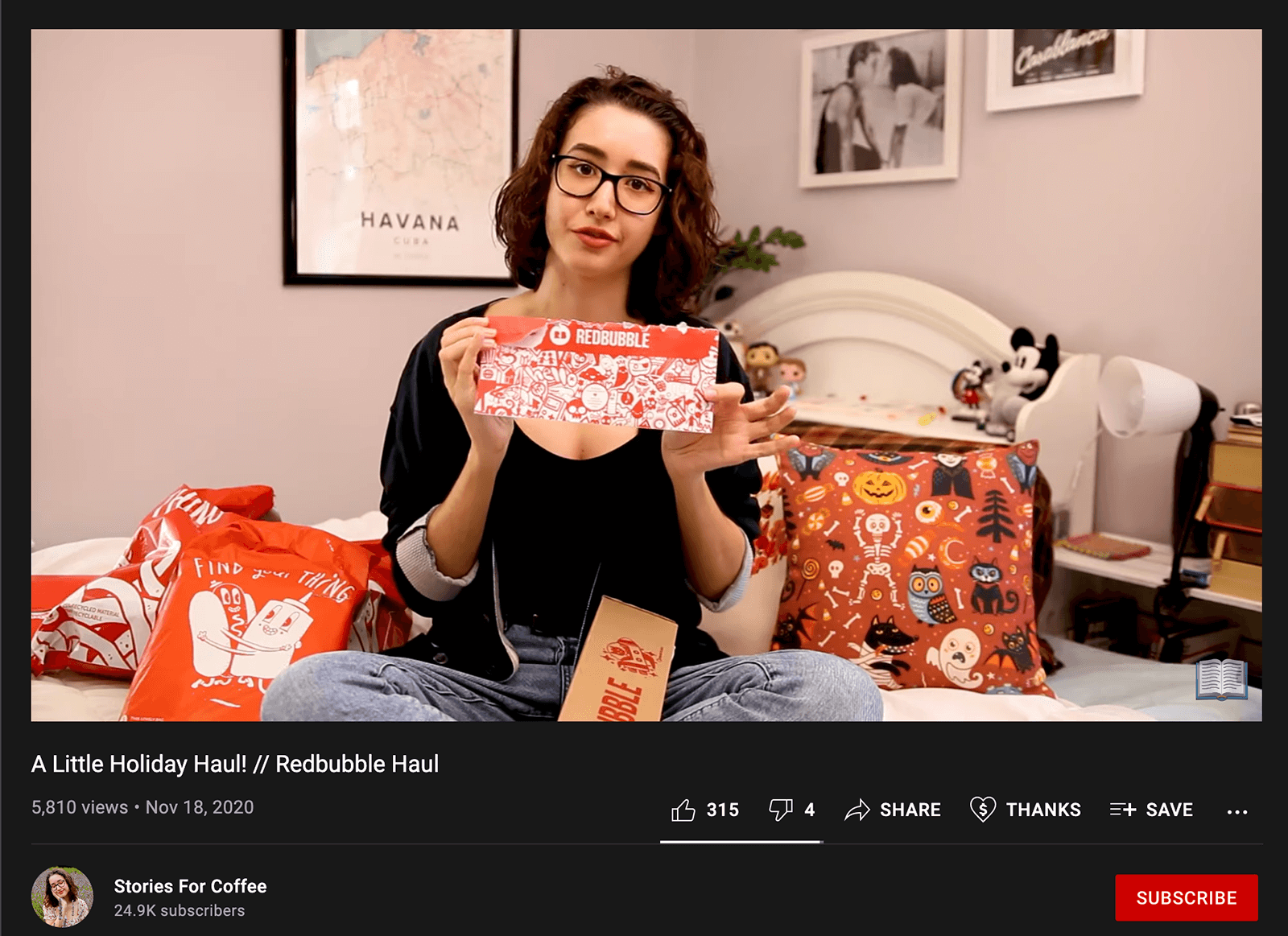
Note that all influencers—from nano to mega—are required to disclose their relationship with your brand. In addition to a sponsorship disclosure in the caption or an #ad hashtag, micro-influencers often include YouTube's paid promotion tag at the beginning of their sponsored videos.
Conclusion
Working with YouTube micro-influencers can be a great way to boost your brand, whether you want to increase awareness, drive sales, or stay top-of-mind with customers. With these tools and workflows at your fingertips, you can start pursuing your first influencer campaign today.
Get More Advice on YouTube Marketing
- Analyze your YouTube channel and videos.
- Run three low-stakes video ads on YouTube.
- Get more visibility in YouTube search results.
Attention Agency Owners, Brand Marketers, and Consultants

Introducing the Marketing Agency Show–our newest podcast designed to explore the struggles of agency marketers.
Join show host and agency owner, Brooke Sellas, as she interviews agency marketers and digs deep into their biggest challenges. Explore topics like navigating rough economic times, leveraging AI, service diversification, client acquisition, and much more.
Just pull up your favorite podcast app, search for Marketing Agency Show and start listening. Or click the button below for more information.

